MASS Meeting Notes for October 18, 2019
Silvio, Dave, Harry and I were in attendance for our 63rd meeting.
It was ironic that after 8 years we are still waiting for the first manned launch of the Commercial Crew program. A person could have gone through high-school and college in that time.
But I assured the group that the first manned flights are eminent. Boeing has committed to a pad-abort test in New Mexico in November, an uncrewed flight to the ISS on Dec. 17, 2019 and the crewed flight in early 2020. SpaceX, who has already performed the uncrewed flight to the ISS last March, had the unfortunate experience of having that capsule explode on April 20 during motor testing in Florida. Scott Manley has a good video explaining how some of the oxidizer leaked past what should have been a one way valve and the high pressure helium turned that plug of oxidizer into a bullet that caused the titanium valve to explode. The solution is to use burst valves on the Dragon capsule which cannot leak but have the disadvantage that they can’t be tested due to the fact that they are destroyed if the motor is used. SpaceX also has had a couple of parachute anomalies during testing. They a now using a Mark 3 parachute that is considered 10 times more robust than the old model. By early November they should be testing using the new Mark 3 chutes and have committed to 10 successful tests probably by the end of 2019 before proceeding. They will also perform an in-flight abort test of the super-Draco thrusters on the Dragon capsule. In this test the capsule will separate and pull away from a Falcon 9 rocket while it is going through maximum dynamic pressure during launch. That will be impressive! Finally, SpaceX is planning to perform their manned mission to the ISS in the first quarter of 2020. It looks like SpaceX will be first to the ISS with a manned mission even though Boeing got $1.6 billion dollars more than SpaceX for Commercial Crew. The justification for the extra dollars was that Boeing had a higher probability of sticking to the schedule. Looks like the taxpayer might not have gotten his money’s worth if Boeing comes in second.
Check out the Commercial Crew page to see the status of the MASS Prize. Sophia will be the winner with her guess of Jan. 7, 2020. Let’s hope it happens early in 2020 so that the Russian’s can’t gouge us for anymore Soyuz seats. NASA is already considering to have the initial Commercial Crew missions stay on the ISS for several months rather than the original 2 weeks. NASA’s last contracted Soyuz is the MS-16 flight which is scheduled to launch on Mar. 20, 2020 and return in September 2020. If we get Commercial Crew capsules flying on production missions to the ISS they will carry Russian cosmonauts and we in turn will continue to get seats for our astronauts on the Soyuz at no cost.
Since our last meeting I’ve gone to two presentations by astronomer Joe DalSanto at COD. The first was about Apollo 11 in July. During his talk Joe did a good job representing the relative sizes of the moon and earth and the distance between them. I attempted the same at our meeting with a 1 cm disk representing the moon and a 3 cm disk representing the earth. I placed them on a table a meter apart to show their distance. The ISS which orbits the earth 250 miles up would only be 1 mm from the edge of the earth disk. That shows the the moon is about a 1000 times more distant than the ISS orbit. To bring the Sun into the picture you’d have to imagine a glowing disk 370 meters (405 yards) away or over 4 football fields. This earth-sun distance is about 93,000,000 miles or 1 astronomical unit (AU). The distance from the Sun to Mars is 1.5 AU, Jupiter 5 AU, Saturn 10 AU, Neptune 30 AU and Pluto 30-50 AU. The Solar System gets big quickly. The distance to the nearest star, Proxima Centauri is 270,000 AU or 4 1/4 light years. That’s why we’ll never have stellar travel with the speed that chemical rockets can provide.
The second talk was about “Pluto and Beyond”. One of the more interesting facts from that talk is that there are over 100,000 objects 50 miles or larger in diameter in the Kuiper Belt which extends 30-50 AU from the Sun. COD has moved Joe’s presentations into a larger room that easily holds 300 people. I estimate that he had 250 people at the Pluto talk. The next lecture will be about the “400 Years of the Telescope” in February 2020. I’ll send out a reminder if anyone wants to attend. The lectures are free.
I told the group they are welcome to come to the house on Monday, Nov. 11, for the Mercury transit across the face of the Sun. With weather permitting, the event should begin at dawn and last until noon. If we miss this one, we’ll have to wait until 2049 for the next one visible in North America.
I also lobbied the group to see who would be interested in Dante Laureta’s, the chief scientist of the Osiris-Rex mission to the asteroid Bennu, new board game, DownLink. I helped crowd source the game through Kickstarter so there are only a couple hundred people in the world that have copies. I’ve played quite a few games of it with my family. The learning curve is a little steep at first but my 10 year old grandson, Ian, had no problem beating me. Here’s a quick synopsis of the rules from Dante himself. It could take up to a few hours to learn the rules and play the first game. I’m considering a special Friday night meeting for those interested in playing. Harry and Dave said they would play. The game can have up to 6 players. Contact me if interested.
Carol and I also went to see the movie Ad Astra with Brad Pitt. A space-based show always perks my interest. I admit I was pretty disappointed. It seemed like a movie with two directors. One director was only interested in action scenes and the other, a melodrama about a father and a son. The action scenes were so contrived and not true to science, that they ruined the movie for me. I told the group that I’ll show the Science & Cinema movie review at the next meeting because there are a lot of spoiler-alerts in it. I’m also going to avoid “Lucy in the Sky” which is loosely based on the female astronaut that drove 900 miles in a trench coat, wig and diaper to confront the other girlfriend of the astronaut she was having an affair with. She was armed with a knife, BB gun, steel hammer and surgical tubing. It’s hardly a story of NASA’s best.
Harry and I recently attended Beth’s bookclub at Harvey’s Tales, a coffee shop in Geneva. Beth was able to get renown space enthusiast and editor of the National Space Society’s publication, Ad Astra, as the telephone call participant during the event. I really enjoyed Rod’s perspective on space topics and the ability to ask him questions.
Beth is almost at the one year mark on her podcast, Casual Space. Dean recently made his fourth appearance on it talking about exoplanets. The TESS satellite is celebrating it’s first year in orbit and has completed its survey of the southern hemisphere. It is looking at stars much closer than the Kepler mission. But with its all-sky technique it only gets to observe a given area for 27 days before moving on to another sector. The celestial pole is the exception, it gets observations for an entire year. With the shorter observation time span, TESS must look for planets very close to their stars. So far, its has discovered 21 planets and detected 850 candidates. Most times when observing with the transit method, a detection is only considered a “candidate” until ground based telescopes can use the radial velocity method to confirm a planet in orbit around a star. One advantage of TESS is that it is looking at the brightest and therefore the closest stars. Its star are about 300 light years away versus the Kepler mission looking at stars 1200 light years distant. With the closer stars, it will be much easier for the James Webb Telescope (JWST) to follow-up and try to detect the atmospheric gases within the exoplanet atmospheres. JWST launches a year from next March. That launch and deployment will be epic!!!
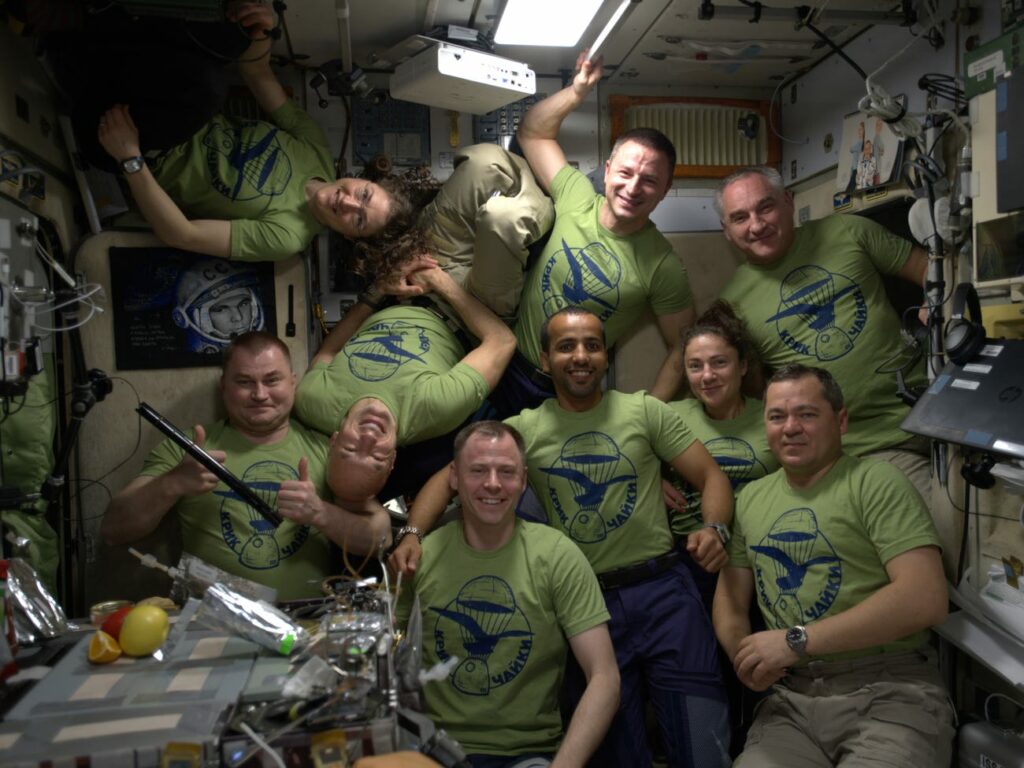
I was also monitoring my database of people-in-space. We are quickly approaching 150 person-years in space. When you have 9 people on the ISS like we did recently for 8 days, the “time in space” number goes up quickly. The Russians launched a space tourist from the United Arab Emirates named Hazzi Al-Mansoori, for the short stay on ISS. The two astronauts that came down with him on Soyuz, Nick Hague and Alexy Ovchinin, were the ones that were on the Russian rocket that exploded during the launch phase back in October 2018. Credit to their “right stuff” mentality to get back on a rocket and launch again in March 2019 and spend 203 days in orbit.
Back to my statistics, there has been 569 people who have traveled beyond the “von Karman” line into space according to my count. The line is often interpreted as 100 km (60 miles) up, but technically Theodore von Kármán calculated that it was 80 km (50 miles) high. It was defined as the height where a satellite could circle the earth and not have atmospheric drag immediately bring it back down. The US Air Force recognizes this lower altitude and has rewarded a couple of X-15 pilots with astronaut wings. I’ve included those persons in my database. The height can be a big deal to people trying to determine if a satellite overflight is benign or an act of military aggression. That’s why the Air Force likes the lower height.
Again getting back to my statistics, 38 people have been in space for more than a year on a cumulative basis, only 6 of those persons are from the US. This shows the Russian advantage with their numerous early space stations. Russia has 77 years of experience in space versus the US’s 57 years.
Christina Koch, one of the women on the recent all-female EVA on Friday, Oct 18, will be 68th on the “time-in-space” list by the end of October. By the time she comes down in February 2020, she will be only 12 days short of the all time US longest duration single space flight by Scott Kelly. Not bad for your first time in space. Also President Trump, who called the space-walkers during their EVA, had to be corrected by them. It wasn’t the first female EVA but the first all-female EVA. There had been 16 previous women who have performed an EVA, 15 of them were US astronauts. The all-female EVA was the 441st EVA and the 221st in support of the ISS. They were replacing a battery charger that had just gone bad. The ISS astronauts have 3 more EVA’s this year to replace nickel-hydride batteries with lithium-ion batteries. There are also another 5 EVA’s have to do with replacing components on the Alpha Magnetic Spectrometer (AMS), a multi-billion dollar particle physics experiment, due to be completed this year. The AMS was never designed to have components replaced so the EVAs could be as complicated as the Hubble Telescope ones. It’s a busy time for such a risky operation as an EVA. You only have that thin space suit separating you from the vacuum of space. The ISS is currently commanded by an Italian astronaut, Luca Parmitano, who had a close call on one of his EVAs. His space suit cooling had a leak and the liquid began to accumulate in his helmet. With the adherence of liquid to the face in zero gravity, you only need a pint of fluid to drown with the fluid covering your mouth and nostrils. Luca is scheduled to perform some of the 8 remaining EVA’s in 2019. When he does another EVA, that would be another occurrence of “getting back on the horse that had thrown you” and conquering any fear you might have. Here are the current 6 astronauts on the ISS including Luca the tall one. And our most recent space walkers Jessica Meir and Christina Koch.

In SpaceX news, Elon Musk had a press conference to show off his new Starship. The spacecraft was fabricated in a field down in Boca Chica, Texas and is a prototype to experiment with flights up to 20 km in altitude and then land on its tail. The final version of Starship will be capable of carrying up to 100 people or 150 tons of payload. It will be powered with the new methane burning Raptor engines. The first stage booster, SuperHeavy, will use up to 37 of these engines. The total height of the two components will rival the Saturn 5 rocket and be totally reusable. He also had a second prototype StarShip under construction at Cape Canaveral in Florida. NASA Administrator, Jim Bridenstine, issued a snarky comment just before the press conference about how SpaceX should concentrate more on the much delayed Commercial Crew Dragon capsule that they are developing. Musk’s response was that the StarShip was only using 5% of SpaceX’s resources and NASA should maybe look at their SLS/Orion project for its extreme delays. I asked Rod Pyle at the bookclub about the situation and he felt that Bridenstine was insincere in that he didn’t also criticize Boeing, who is even farther behind schedule than SpaceX, and the fact that they got $1.6 billion more than SpaceX for Commercial Crew capsule development. The extra money was justified with the logic that Boeing had more experience building spacecraft and therefore they had a better chance of staying on schedule. Lori Garver, a former deputy NASA Administrator, also weighed in on the controversy.
SpaceX has successfully caught a fairing on 2 of their launches with the renamed boat, Ms Tree. It took the commissioning of a second boat, Ms Chief, for me to get the play on words of the ship names (mystery and mischief, get it?). A fairing half is worth about $3 million. So it is not a trivial item to recover and reuse. SpaceX has successfully landed and recovered 44 of their first stage Falcon9 cores and side mounted cores on the Falcon Heavy. But they are 0 for 3 on center cores of Falcon Heavy. The center core from the second Falcon Heavy rocket landed ok but then fell over on the barge due to heavy seas. Here is a video about the third Falcon Heavy by Scott Manley which also was a failed center core landing. It was a night time launch and Beth got to watch it live down in Florida as a guest of the Planetary Society which had its LightSail2 as one of the payloads.
SpaceX has had 10 launches so far in 2019 (8-Falcon9 and 2-Falcon Heavy). One of the launches was the CRS-18 supply mission to the ISS. Interesting payloads included a 3-D printer capable of printing with human cells. Eventually scientists hope to build human organs like a lung, liver or kidneys in space. The advantage of zero gravity is that your organ doesn’t wind up as a pile of goo as it would on earth if you don’t build the support structure of connective tissue at the same time. Another payload was the second International Docking Adapter (IDA). The ISS now has 2 of these IDAs which will be used by the Commercial Crew vehicles.
The Chinese have recently announced some of their manned space goals. They were the third country to independently launch astronauts and their new capsule can hold 4-6 persons. It looks a lot like Apollo or Orion capsule and consists of a crew and service module. I wonder how much industrial theft might of occurred in their design process. The new spacecraft is 9 m (30 ft) long and has a lift off mass of 22 tons (20 mt). Their current capsule, Shenzhou, is patterned after the Soyuz and weighs 8.6 tons (7.8 mt) and can support 3 persons. A boilerplate version of the new unnamed capsule was launched in 2016 to test reentry and landing. A complete version is scheduled for an uncrewed test flight in the first half of 2020 on a Long March 5B rocket. Long March 5 is scheduled to launch 20 mt modules for their space station beginning in 2021. The Long March 9 rocket under development will have capabilities similar to the Saturn V and SLS. For comparison the Apollo command module was 3.9 m (12.8 ft) in diameter and weighed 5,800 kg ( 5.8 mt or 12,800 lb). Our new capsule, Orion, is 5 m (16.5 ft) in diameter and weighs 14,000 kg (14 mt or 31,000 lb). Orion’s service module weighs an additional 11,800 kg (11.8 mt or 26,000 lb). Orion has 50% more internal volume than Apollo. India is also building a manned capsule that looks a lot like the Blue Origin’s, New Shepard. Its name is Gaganyaan which is Sanskrit for “Sky Vehicle”.
In moon news, two of the Lunar X Prize teams attempted landings on the moon. On April 11, Israel and the SpaceIL team made their attempt but crashed when their rocket engine stopped and communication was lost about 500 ft above the surface. The X Prize people still awarded the team $1 million for the valiant effort. But the most recent news was that a bunch of tardigrades had been smuggled aboard the craft. Apparently Nova Spivack, who had been tasked with making some small coin-sized disks containing a Hebrew bible and some other cultural artifacts, also added some of the tiny animals. If the tardigrades were put in their “tun” phase where they pull in their legs and secrete an outer cellular layer of protection, they still would never reanimate if hydrated after 10 years. Tardigrades exposed to the vacuum of space and radiation for 12 days had only a 12% survival rate after hydration and those that did reanimate suffered rapid mortality. As we get more countries involved with space travel, planetary protection rules will be a harder to enforce. The US shouldn’t throw any stones on this occurrence because the Apollo astronauts left over 90 bags of poop during their stays on the moon.
The other more recent moon landing attempt was near the south pole by India and the Indus X Prize team. Their Chandrayaan-2 spacecraft included a 6 wheel rover Pragyan Rover on the 3200 lb Vikram lander. One of the amazing parts of the mission is it cost only $124 million ($31 million for the rocket and $93 million for the spacecraft). The is less than half of the “Avengers: End Game” movie budget. Communication was lost during decent at about 2 km.
With the failures of Israel and India, only 3 countries have soft landed on the moon, Russia, US and China. China has done the two most recent landings. Most recently on Jan 3, 2019 they performed the first far side landing with their Chang’e 4 lander and Yutu 2 rover. The Yutu 2 rover recently completed its 10 lunar day on the moon. The 2 week daylight and 2 week darkness cycle is a much more difficult thermal environment to survive than the 24 hr 37 min day cycle on Mars. During the 2-week night temperatures can drop to -310 degrees Fahrenheit and daytime temperatures can rise to +266. Yutu 2 has traveled 950 ft in total after landing in the Von Karman crater. The Chinese have been a little sketchy on releasing information about what it has discovered. The Chinese feat is all the more amazing considering they had to put an orbiter at the Lagrange point beyond the moon to provide constant communication with their surface equipment.
In other solar system news, another 20 moons were discovered around Saturn by the Subaru telescope in Hawaii. That makes Saturn the king of the moons with 82, Jupiter is a close second with 79, followed by Uranus 27, Neptune 14, Pluto 5, Mars 2 and Earth 1. That adds up to 210 moons in the solar system! The newly discovered moons are small, only 2 to 5 km, and are in large orbits that take years to circle the planet. 17 of them are in retrograde orbits meaning they circle Saturn in the opposite direction of its rotation. The would indicate that they are captured asteroids.
On Mars, in June this year, the Curiosity rover again detected methane at 21 parts per billion which is 3 times the concentration first detected in 2013. It is confusing to scientists that for over a year the Trace Gas Orbiter from the European Space Agency has not detected any methane from orbit. Curiosity’s detections seem to come with the seasons. Curiosity must be downwind from a small herd of farting cows. But seriously, the methane could come from geological rather than biological processes.
Our other operating Mars lander, Insight, had some good news on its heat probe “mole” that is a self burrowing nail like device. The “mole” penetrated about 12 in and stopped making progress in February this year. Scientists couldn’t tell if it hit a big rock or if the soil wasn’t giving enough friction (nice 3 min video summary) for it to make more progress. The device is capable of drilling 16 ft down and needs at least 10 ft to do good heat flow science. In June, scientists gingerly removed the mole’s support structure. If they pulled the mole out of the ground that would be the end of the experiment. They saw that the hole was about twice the diameter of the mole. So on October 14 they pressed on the side of the mole with a scoop and it made another inch of progress. They feel this confirms that the problem is a lack of friction with the soil. The scoop will be only able to press on the mole for another couple of inches of progress before it will be below ground level. Dean is our most pessimistic MASS guesser on the final mole depth with 42 in. We still have a long way to go for that depth but the scientists seem very creative in their troubleshooting. So let’s hope they get to that depth and more.
Concerning Earth, scientists determined that 17 meteors, that start out as about a meter in size, get though our atmosphere and crash into land or the ocean. It is estimated that 25,000 Near Earth Asteroids (NEA) of 140 m size circle the sun. On June 27 a large asteroid, 2008 KV2 passed by Earth at 4.2 million miles (17 times the moon’s distance). It will flyby again in 2021 and twice in 2022. It’s a big one, maybe 330 m (1082 ft) in diameter. To qualify as a NEA, the object must orbit 91 to 121 million miles from the sun which could bring it within 30 million miles of Earth. 2008 KV2 zooms past us at 25,400 mph and is considered a Potentially Hazardous Asteroid (PHA) which has a narrower definition of approaching with 4,600,000 miles of Earth and having a size 140 m or larger.
Concern about collision with asteroids is why there are so many asteroid missions in NASA’s and other space agencys’ plans. Japan has the Hayabusa 2 mission returning a sample of asteroid Ryugu and the US has the Osiris-Rex mission doing a sample return from Bennu. NASA has just awarded an asteroid redirect mission to SpaceX. The Double Asteroid Redirection Test (DART) will launch on a Falcon 9 rocket in June 2022. It is relatively cheap at $69 million. The asteroid is named Didymos (775 m or 2540 ft diameter). It comes within 7 million miles of Earth and has a small moon called Didymoon (165 m or 540 ft). The spacecraft will kinetically intercept the asteroid’s moon and see how much it affects the orbit. Short video explaining the mission. NASA would never have been able to do the mission so cheaply if they weren’t using a previously used Falcon 9 whose cost might be as low as $50 million.
In a cosmos level concern, cosmologists are worried about the discrepancy in the Hubble constant that measures the expansion of the universe. One way of determining the constant is using the picture of the Cosmic Microwave Background Radiation (CMBR) with the Planck satellite. This yields 67 km/s/Mpc. That means for every mega parsec (3 1/4 million light years) of an object’s distance from us, it should be moving 67 km/s away from us. But when astronomers look at supernovas, they calculate 73 km/s/Mpc which is a 9% higher value. This could break the standard model of physics to reconcile. A recent study using red giant stars has indicated a value between the two. As measurements have become more precise over time, the error bars of the 3 methods no longer overlap as seen in this diagram. There is hope that gravitational waves or the newer Gaia spacecraft will help pin down the correct value. The value of 73 would mean the universe is a couple of hundred million years younger than the currently accepted 13.8 billion years. The discrepancy could have big implications for dark matter and energy. The CMBR value could be changed by the presence of a fourth neutrino (sterile one) or an extra dose of dark energy 20,000 to 100,000 years after the Big Bang which boosts the early universe energy and makes it expand faster.
Something that we didn’t discuss but I wanted to mention, is the April 2019 release from the twins study. Scott Kelly, who was in space for 340 days starting in March 2015 was medically compared to his retired astronaut twin Mark. They were studied for one year before the mission and several months after. The 25 month study didn’t find any substantial changes in human physiology between the two brothers. Mark had the same tests done on the ground as his brother Scott in space. Most functions returned to normal when Scott came back to earth. His telomeres, ends of DNA strands that protect chromosomes, actually lengthened while in space. Shorter telomeres are associated with aging and disease. His telomeres returned to normal length within 48 hours back on earth. I wonder if his rigorous exercise and low calorie diet had something to do with the healthier telomeres on orbit. Humans have between 17,000 and 25,000 genes. An epigenetics study looked at methylization of genes which determines how genes express themselves. That’s how cell forms different cell types. They both had more variation than expected and Scott’s results indicated that he was subjected to more stress and inflammation than his brother. His carotid artery thickened, along with his eye retinas and the skin on his forehead. A Flu shot on orbit worked like it should, meaning his immune system response was the same. Scott’s cognitive performance did not significantly decrease when compared to his twin. He was subjected to a radiation equivalent of 4 CAT scans during his time on the ISS which is about what an airline pilot would be subjected to. Low Earth Orbit (LEO) is a much more benign radiation environment than lunar orbit or going to Mars. The proposed Lunar Gateway would be a great place to study outside the earth’s Van Allen radiation belts. The loss of the Dragon cargo capsule while he was on orbit had an impact on the study but scientists adapted to what was achievable without bringing blood and urine samples down from orbit during part of his mission.
Harry brought up the topic of NASA’s experimental “all electric” airplane, the X-57 Maxwell. The plane was completed in October 2019 and is currently undergoing ground tests. I’m not sure batteries will ever be able to have the energy per pound of fossil fuels but I bet they are a lot quieter than the jet engines flying over my house on the way to and from Ohare.
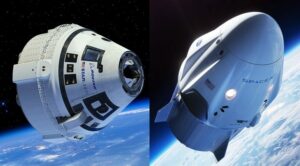
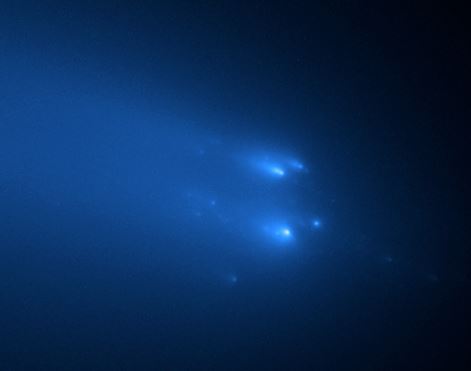
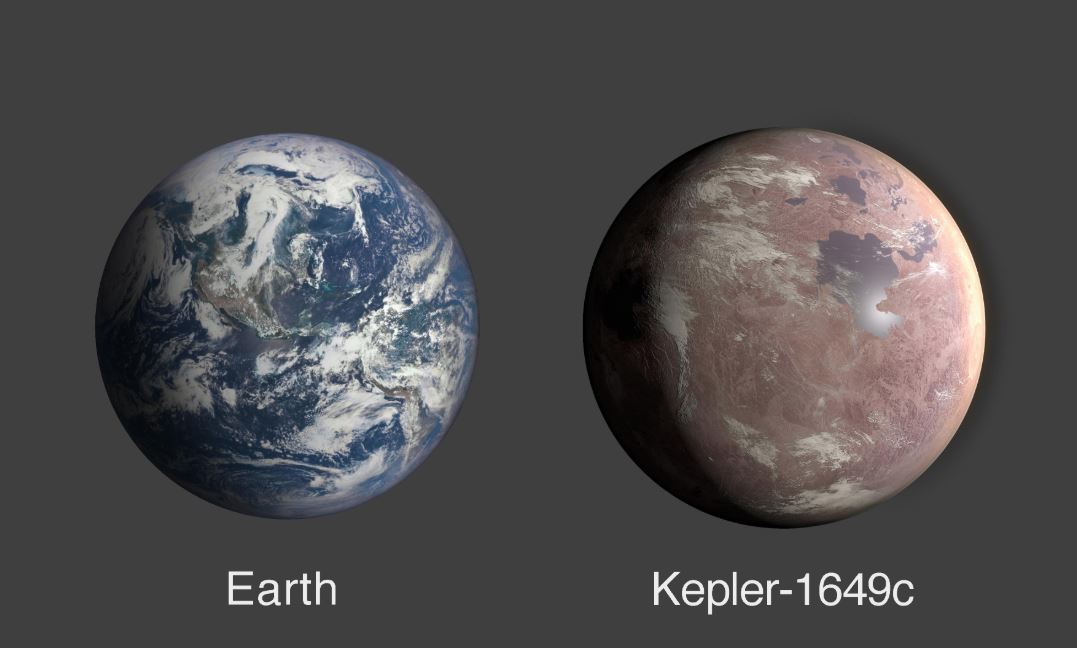
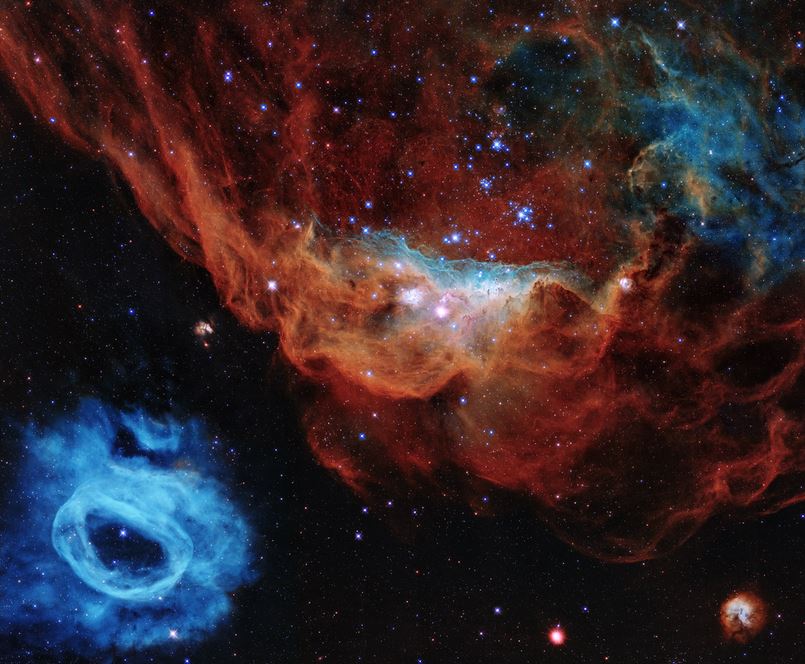
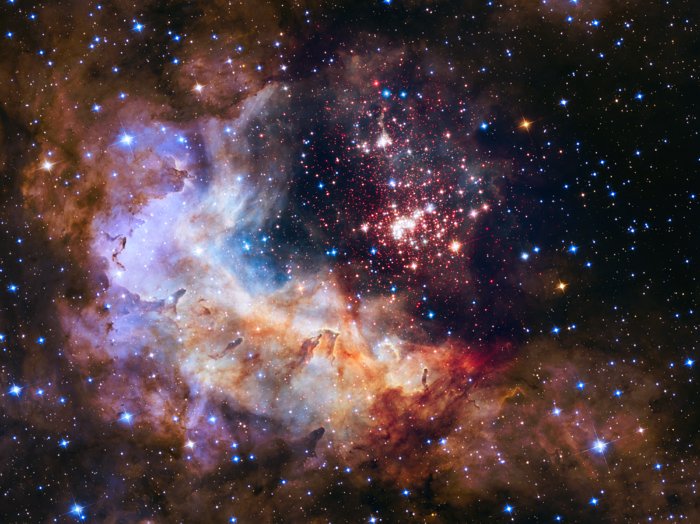

Recent Comments